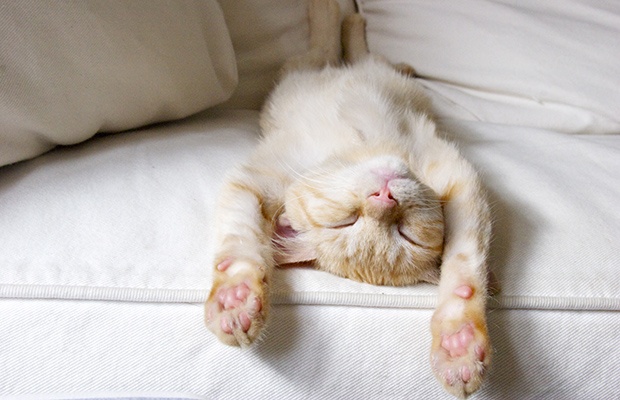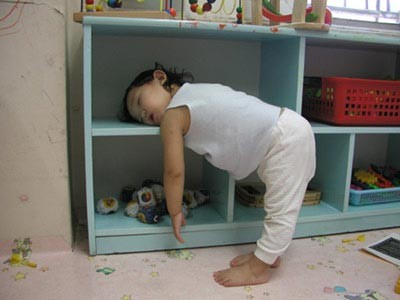On the Importance of Napping
September 6, 2018
I am a high school student, and I am chronically sleep-deprived.
But listen here, my avid Patriot Press readers. The one thing that has helped me get through three years of high school without completely going crazy was the simple yet powerful concept of Naps. And today, we will discuss it (the napping how-to is all the way at the end, so scroll down if you’re only interested in that!).
First of all… apparently, there are scientific ways to classify naps according to the National Sleep Foundation:
- “Planned napping (also called preparatory napping) involves taking a nap before you actually get sleepy. You may use this technique when you know that you will be up later than your normal bed time or as a mechanism to ward off getting tired earlier.
- Emergency napping occurs when you are suddenly very tired and cannot continue with the activity you were originally engaged in. This type of nap can be used to combat drowsy driving or fatigue while using heavy and dangerous machinery.
- Habitual napping is practiced when a person takes a nap at the same time each day. Young children may fall asleep at about the same time each afternoon or an adult might take a short nap after lunch each day.”
Of all the napping techniques, many students are most familiar with the ‘complete exhaustion’ emergency napping, “the heavy and dangerous machinery” being a big assignment due the next day. While there is nothing really wrong with this type of napping, we could try to make our siestas more orderly.

The Benefits of Naps
Research by Dr. Sara Mednick, a psychologist at the University of California, shows that a nap—defined as daytime sleeping that lasts between 15 and 90 minutes—can improve brain functions ranging from memory to focus and creativity. “For some people, naps are as restorative as a whole night of sleep,” Dr. Mednick adds. More research shows a quick nap can lower stress and recharge your willpower. And napping has also been linked to lower rates of cardiovascular disease and inflammation. A recent study in the research journal Sleep showed that a 10-minute nap produced the most benefit in terms of reduced sleepiness and

improved cognitive performance.
All in all, that nap IS worth it, and it can make you feel so much better. But…
WARNING!
Alas, napping isn’t for everyone. Some people simply can’t sleep during the day, or have trouble sleeping in places other than their own beds, which napping sometimes requires.
Napping can also have negative effects, such as:
- Sleep inertia, which is when you feel groggy and disoriented after waking up from a nap. A nap lasting 30 minutes or longer is more likely to be accompanied by sleep inertia.
- Nighttime sleep problems, which can be caused by long or frequent naps, especially if combined with existing sleep problems such as insomnia. Still, short naps don’t affect nighttime sleep quality for most people.
- One study has indicated that napping is associated with increased risk of heart failure in people already at risk. Note: “people already at risk”, meaning someone with an existing condition or a lifestyle that raises their chances of a heart disease.
- Finally, daytime napping could be an early indicator of underlying ill health – but, once again, daytime drowsiness is likely a symptom of other health issues, not their cause.
As long as you keep these potential issues in mind, and don’t overdo naps, your snooze session should go smoothly, and the benefits of napping will outweigh any negatives 🙂
“But what if I can’t fall asleep during the day?”
The How-To of Napping (from my personal experience)
- Find a place where you can fall asleep. Sometimes it’s easier to fall asleep if you are familiar with the place, so sleeping in your normal bed could help.
- Draw the blinds/curtains, limiting the amount of light inside the room. Turn off any lamps.
- Put in earbuds, with relaxing sleep music or nature sounds (whatever makes you feel sleepier). Spotify has a lot of playlists for this purpose specifically, and YouTube has many sleeptime videos, too, just search the word “Sleep” or “Sleep music/sounds”.
- If you are able to, regulate the temperature in the room to make it as comfortable as possible. Adjust the AC, cover yourself with an extra blanket, etc.
- Set an alarm in case you need to wake up at a certain time.
- Now, get in bed, close your eyes, and try to sleep.
- Even if you don’t feel like anything is happening, give it about fifteen minutes – you should start feeling sleepier and sleepier as time goes on.
- Focusing on your breath can help you relax and turn your attention away from any outside distractions.
But, once again: if you take a nap too late in the day, it might affect your nighttime sleep patterns and make it difficult to fall asleep at your regular bedtime. Meanwhile, if you try to take it too early in the day, your body may not be ready for more sleep. So make sure to watch out for this and plan accordingly!
Sometimes, however, you might have a day when you just can’t to fall asleep during the day. That’s ok! Even lying in bed with your eyes closed can give you some needed rest, and you will feel better from taking the small break. Alternatively, drink up on that coffee and maybe do some light exercise (it helps you feel more energetic!), and definitely try to get more sleep during the night.
In the end, if you happen to be pulling all-nighters this year, don’t forget to take some time off for your tired brain. Or, maybe, instead of napping an extra hour during the day, you could try going to sleep one hour earlier. Just a thought.
Sources:
http://time.com/3449959/is-napping-healthy/
https://academic.oup.com/aje/article/179/9/1115/2739197
https://www.mayoclinic.org/healthy-lifestyle/adult-health/in-depth/napping/art-20048319






















































